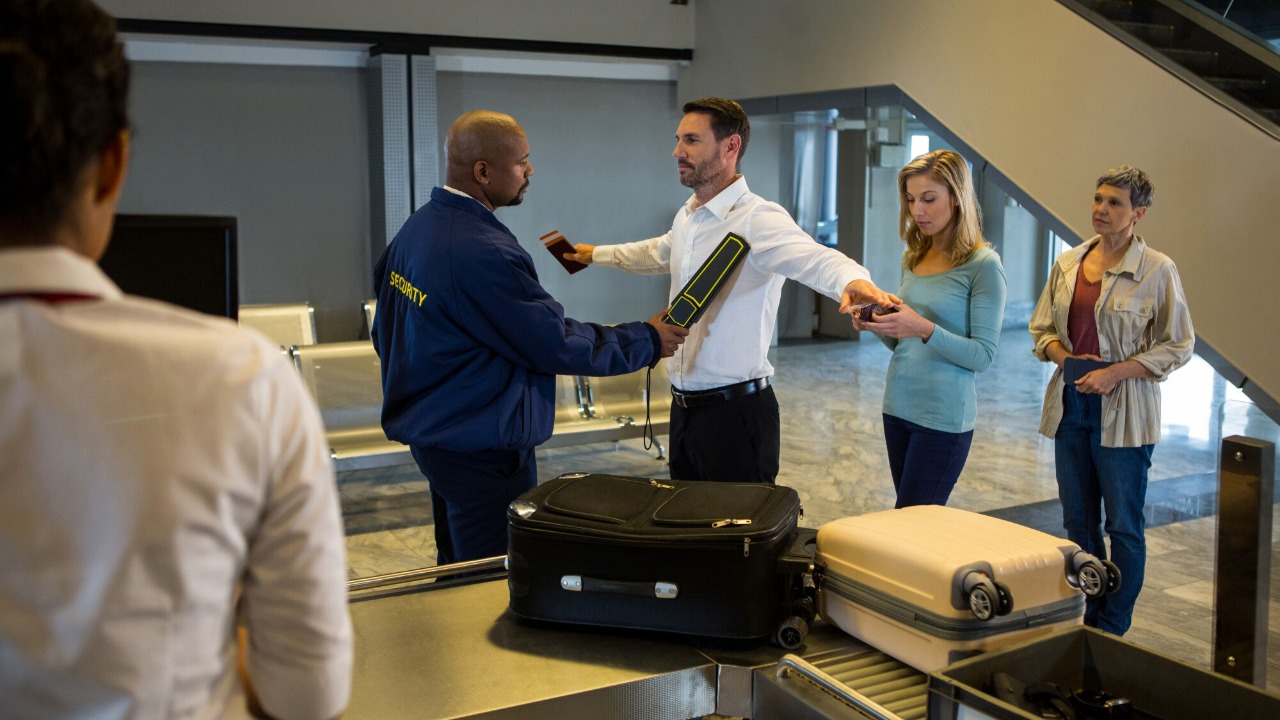
Recent updates from the Transportation Security Administration (TSA) have highlighted how certain electronic items and passenger behaviors can lead to delays at airports. Travelers often face enhanced screening when flagged with the “SSSS” tag on their boarding pass, a situation frequently linked to suspicious electronics. Understanding which electronics are considered red flags and how to navigate TSA checkpoints can help travelers avoid unnecessary hassles. This article delves into the specifics of TSA’s electronic screening processes, common banned items, and behaviors that might trigger additional scrutiny.
Understanding TSA Scanners and Electronics Detection
TSA scanners are designed to detect electronic components such as batteries and circuits, which can appear as dense or unusual shapes on imaging screens. These scanners are adept at identifying hidden wiring or power sources, which often trigger alerts. The technology used in these scanners allows security personnel to see inside devices, making it crucial for travelers to pack their electronics in a way that avoids suspicion. Ensuring that devices are easily identifiable and free of hidden compartments can help travelers pass through security smoothly. For more insights on how TSA scanners operate, click here.
To prepare for scanner scrutiny, travelers should ensure that their electronic devices are fully charged and easily accessible. This visibility allows TSA agents to quickly verify the contents and functionality of the devices, reducing the likelihood of delays. Packing electronics in a separate, clear bag can also facilitate a smoother screening process.
Common Banned Electronics in Checked Bags
The TSA has a list of 16 items banned from checked baggage, many of which are electronic. These include lithium batteries over certain capacities, e-cigarettes, and power banks that exceed specific limits. These items are prohibited due to the potential fire hazards they pose, particularly in the pressurized environment of an aircraft’s cargo hold.
Understanding these restrictions is crucial for travelers who wish to avoid having their items confiscated. For instance, lithium batteries are known for their volatility and can ignite under certain conditions, making them a significant risk during flights. By adhering to these guidelines, travelers can ensure their electronics are safe for transport and avoid contributing to potential safety hazards.
Top Confiscated Electronics at Security Checkpoints
Among the top 10 items confiscated by the TSA at security checkpoints, electronics such as prohibited chargers and devices containing liquids are common. These items often raise red flags due to their potential to conceal dangerous materials or interfere with aircraft systems. For example, smartwatches with undeclared features can be confiscated if they are suspected of containing unauthorized communication capabilities.
Improper packing of electronics is a frequent cause of confiscation. Travelers should ensure that all electronic devices are declared and packed according to TSA guidelines. This includes removing any liquids from devices and ensuring that chargers and cables are neatly organized to avoid suspicion.
Passenger Behaviors with Electronics That Raise TSA Flags
Everyday behaviors by passengers can also raise red flags for the TSA. Actions such as nervous handling of devices or repeatedly checking hidden compartments in gadgets can lead to increased scrutiny. According to Fox News, these behaviors might result in passengers being held up at the airport.
To mitigate these risks, travelers should remain calm and composed when handling their electronics. Avoiding unnecessary fiddling with devices and ensuring that all compartments are easily accessible can help prevent unwanted attention from security personnel. By being aware of these behaviors, passengers can reduce the likelihood of delays and ensure a smoother travel experience.
SSSS Designation and Its Link to Electronics
The “SSSS” designation on a boarding pass indicates a traveler has been selected for additional screening, often due to flagged electronics. This enhanced screening can include thorough pat-downs and detailed inspections of electronic devices. According to The Points Guy, travelers with this designation should be prepared for a more extensive security process.
To avoid receiving the SSSS tag, travelers should ensure that all electronics are properly declared and packed according to TSA guidelines. Being transparent about the contents of their luggage and following security protocols can help reduce the likelihood of being flagged for additional screening. By understanding the implications of the SSSS designation, travelers can better prepare for their journey and minimize disruptions.
More from MorningOverview